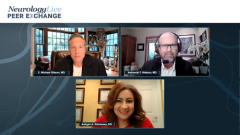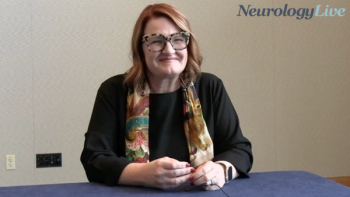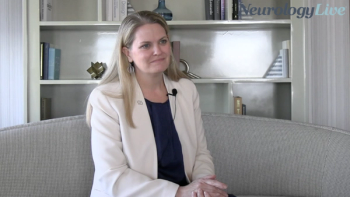
Unmet Needs in Sleep Disorder Management
Nathaniel F. Watson, MD, leads a discussion on gaps in care and unmet needs for patients and healthcare professionals in the area of sleep disorders.
Episodes in this series

C. Michael Gibson, MD: Let’s talk about unmet needs. Obviously, people need to wake up to sleep disorders. It was fun to hear you say that it’s an exciting time in sleep because we usually think of sleep as something not exciting. What are some of the big unmet needs? What do we need to do?
Nathaniel F. Watson, MD: Sleep deprivation is the most common cause of sleepiness in our society. We have to find ways to encourage people to prioritize sleep. When there are many competing interests for their time, I try to get the patient to focus on the quality of their wakefulness experience as opposed to the quantity of their wakefulness experience, and that seems to resonate with patients when I discuss that with them. Other unmet needs include the sleep medicine physician shortage in the United States. We need to expand the specialty. The American Academy of Sleep Medicine and other organizations are working to expand fellowship programs, bring more trainees into sleep medicine, and improve access to care across the board.
We live in a time where 80% to 85% of patients with sleep disorder breathing never cross the threshold of a sleep disorder center to get the problem diagnosed and treated. That’s a real problem when we know how much of a positive impact we can have on the quality of life for these individuals. It’s such a missed opportunity. We have to figure out a way to tackle and solve that problem. It’s been difficult to engage other specialties in the care of sleep medicine. On the bright side, cardiologists such as yourselves are embracing the notion of paying attention to sleep disorders and sleep problems. I know that there are some entities developing products. That could be a cross between a Holter monitor and a sleep monitor, for instance. Hopefully, we’ll have technologies that can be used by other specialties, like cardiology and sleep medicine, to bring these groups together and to have discussions, so we can make sure that appropriate referrals are landing on our desk. It’s a challenging time in many ways. We have to continue to convince anyone who listens to us that healthy sleep is the way to a healthy, happy life.
C. Michael Gibson, MD: From your perspective, Ashgan, what are some of the unmet needs?
Ashgan A. Elshinawy, DO: We have to remove the barrier to discussing sleep with patients. Time is a huge factor, especially in private practice. A lot of people don’t take the time, or they’re afraid to ask about sleep. A lot of practitioners won’t even go near it because they’re afraid that the patient is going to say, “Yes, I have a horrible sleep problem,” and they won’t know how to address it.
C. Michael Gibson, MD: That’s true. They’re scared of it. They’re scared that someone is going to ask for benzodiazepine.
Ashgan A. Elshinawy, DO: They get stuck prescribing it and refilling it. I’m friends with a lot of primary care physicians. They’ll say, “I don’t want to get stuck filling prescriptions that I’m not comfortable filling.” In New Jersey, where we are, there are certain medications that you can’t even give beyond 5 days. Then what? You’ve solved the problem for 5 days, but you have to figure out the long-term solution. It’s a time commitment and an education commitment.
It’s very important to destigmatize sleep problems. Patients often equate sleep disorders, insomnia, or sleep apnea with something they did wrong. I may not be sleeping well because of my bad habits or because of something I did or didn’t do. Or they ask if they’re doing it incorrectly. They’re almost afraid or embarrassed to admit it to their doctors. Even when they’re asked about it, they say no. They brush it off and say it’s fine. But the doctor has to be a little more in-depth and say that your blood pressure is out of control. You’re having headaches way too often. You have moodiness, and your relationships are suffering. Are you sure your sleep is OK? They have to push it and ask targeted questions, rather than just, how’s your sleep? Most of them will that it’s OK because they don’t want to delve deeper. It goes back to a lot of communication. Take an extra 2 to 3 minutes. You can always address it more on a subsequent visit if there’s not enough time, but at least you’ve flagged that as being a very significant concern for that patient.
C. Michael Gibson, MD: The DORA isn’t predictive, right? That would help alleviate some of this concern about addiction. Is that true?
Ashgan A. Elshinawy, DO: Yeah. The data that Dr Watson was reviewing with us about these agents are 1-year data and an extension trial. They show that it’s not habit forming. They don’t have withdrawal symptoms if you discontinue the medication. Whether it’s that category of medicine or another that I choose for the patient, I always point that out because that’s 1 of their biggest concerns. You hit the nail in the head: they’re afraid. They’re asking, “Am I going to get addicted to this? Am I going to have to use this for the rest of my life? Am I never going to be able to come off it for a night or 2?” I always try to educate them about the drug—the half-life, how much of a habit-forming risk there is with this drug. It puts them at ease. Even if there’s some risk, they’re empowered by knowing what they’re getting themselves into. As a sleep practitioner, I try to steer away from any habit-forming medications.
Nathaniel F. Watson, MD: DORAs should be taken nightly. They curtail wakefulness. They’re not a general sedative. Particularly with…the adverse effects were fairly comparable to the placebo. As far as primary care physicians are concerned, they should view this class of medication as a breakthrough and be a bit more comfortable managing insomnia with these medications, as opposed to some of these others—particularly benzodiazepines, which can be problematic from a number of perspectives. One thing that’s important to realize with the…is that there’s no recommended starting dose and no titration schedule. In the many pivotal trials, 35% to 40% of individuals were age 65 and older. That can give people some comfort in prescribing this medication in some of our older patients.
As far as sleep apnea is concerned, some newer things coming out might make it easier to think about managing in primary care settings. There’s a TENS [transcutaneous electrical stimulation therapy] unit that can strengthen the slow-twitch muscle fibers in the tongue to address this. There’s potential development of a medication in clinical trials for sleep apnea. There’s nothing imminent that I’m aware of, but there may be in the next 5 years or so. It’s worth noting for our primary care colleagues that the management of sleep disorders is going to become something more accessible to them in their practices.
Transcript Edited for Clarity
Newsletter
Keep your finger on the pulse of neurology—subscribe to NeurologyLive for expert interviews, new data, and breakthrough treatment updates.


































